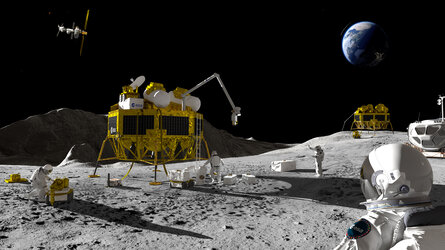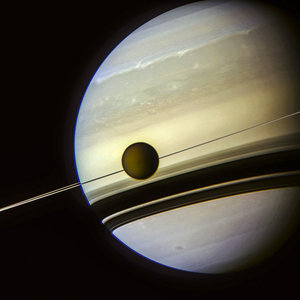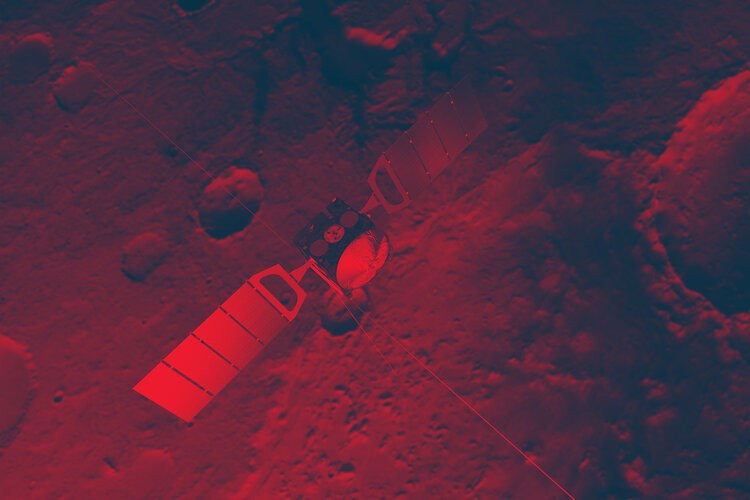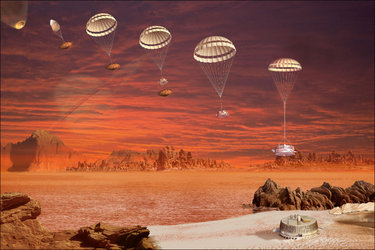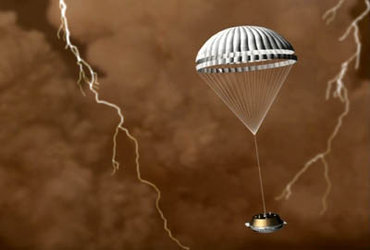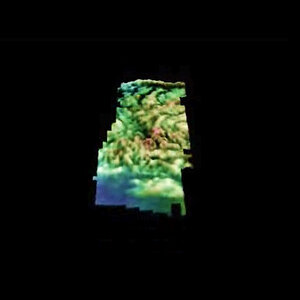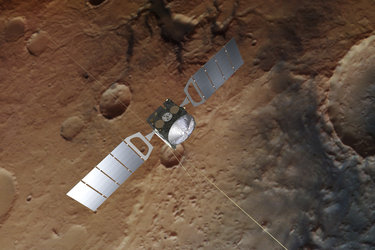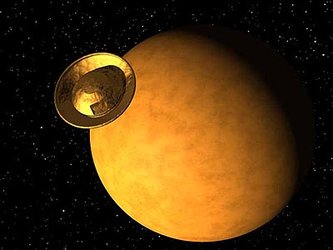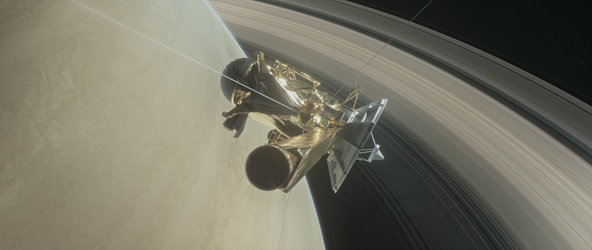Highlights of ESA’s Huygens mission
After a seven-year journey on board the NASA/ESA/ASI Cassini spacecraft, ESA’s Huygens probe was released on 25 December 2004. It reached the upper layer of Titan's atmosphere on 14 January 2005 and landed on the surface after a parachute descent of 2 hours and 28 minutes.
Clear images of the surface were obtained below 40 km altitude – revealing an extraordinary world, resembling Earth in many respects, especially in meteorology, geomorphology and fluvial activity. The images show strong evidence for erosion due to liquid flows, possibly methane, on Titan.
The probe descended over the boundary between a bright icy terrain eroded by fluvial activity, and a darker area that looked like a dry river- or lakebed. Huygens landed in the dark area. Water-ice pebbles up to a few centimetres in diameter were scattered near the landing site, and the surface here was found to have the consistency of loose wet sand.
Winds were found to blow predominantly in the direction of Titan’s rotation, west to east winds, with speeds up to 450 km/h above an altitude of 120 km. The winds decreased with decreasing altitude and then and changed direction close to the surface. An unexpected layer of high wind-shear was encountered between altitudes of 100 and 60 km.

Huygens also surprised the scientists by finding a second lower ionospheric layer, between 140 km and 40 km, with electrical conductivity peaking near 60 km, and its instruments may also have recorded the signature of lightning.
‘Haze’ was detected all the way down to the surface, contrary to the predictions of pre-Huygens models. It was predicted that the atmosphere would be clear of ‘haze’ in the lower stratosphere, below around 60 km. Fortunately, the haze was transparent enough for good images of the surface to be obtained below 40 km.
Huygens enabled studies of the atmosphere and surface, including the first in-situ sampling of the organic chemistry and the aerosols below 150 km. These confirmed the presence of a complex organic chemistry in both the gas and the solid phase, which reinforces the idea that Titan is a promising place to observe chemical pathways involving molecules that may have been the building blocks of life on Earth.
Argon 40 was also detected at the surface and its presence indicates that Titan has experienced in the past, and is most likely still experiencing today, internal geological activity.
Notes to editors:
This is a summary based on a paper called ‘An overview of the descent and landing of the Huygens probe on Titan' , which appears on line in Nature, on 30 November 2005.
The authors are: Jean-Pierre Lebreton, Olivier Witasse, Miguel Pérez-Ayúcar and Thierry Blancquaert, ESA Science Directorate, ESTEC, The Netherlands; Claudio Sollazzo, ESA Operations Directorate, ESOC, Germany; Patrice Couzin and Anne-Marie Schipper, Alcatel Alenia Space, Cannes-La Bocca, France; Jeremy B. Jones and Dennis L. Matson, NASA JPL, Pasadena, USA; Leonid I. Gurvits, Joint Institute for VLBI in Europe, Dwingeloo, The Netherlands; David H. Atkinson, Univ. of Idaho, Moscow, USA and Bobby Kazeminejad, Space Research Institute, Austrian Academy of Sciences, Graz, Austria.
For more information:
Jean-Pierre Lebreton, ESA Huygens Mission Manager
E-mail: jplebret @ rssd.esa.int















 Germany
Germany
 Austria
Austria
 Belgium
Belgium
 Denmark
Denmark
 Spain
Spain
 Estonia
Estonia
 Finland
Finland
 France
France
 Greece
Greece
 Hungary
Hungary
 Ireland
Ireland
 Italy
Italy
 Luxembourg
Luxembourg
 Norway
Norway
 The Netherlands
The Netherlands
 Poland
Poland
 Portugal
Portugal
 Czechia
Czechia
 Romania
Romania
 United Kingdom
United Kingdom
 Slovenia
Slovenia
 Sweden
Sweden
 Switzerland
Switzerland











